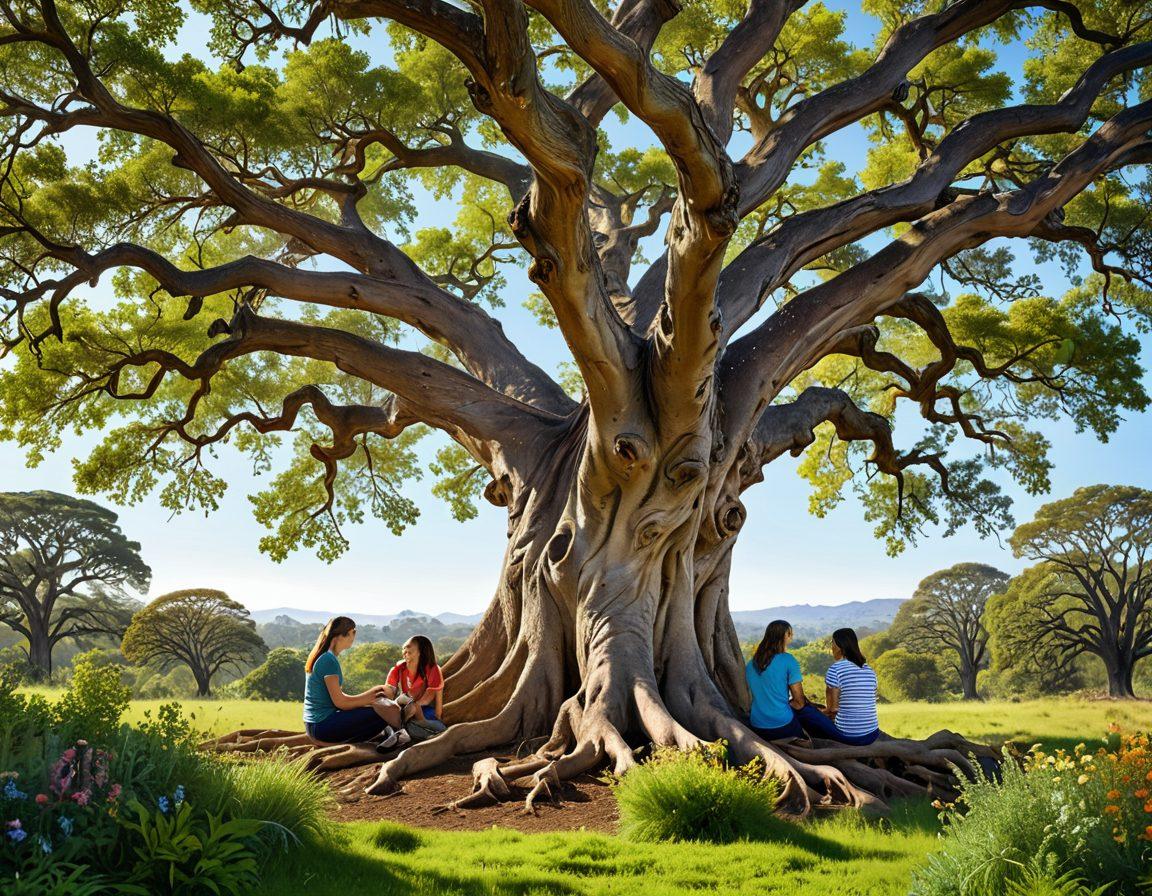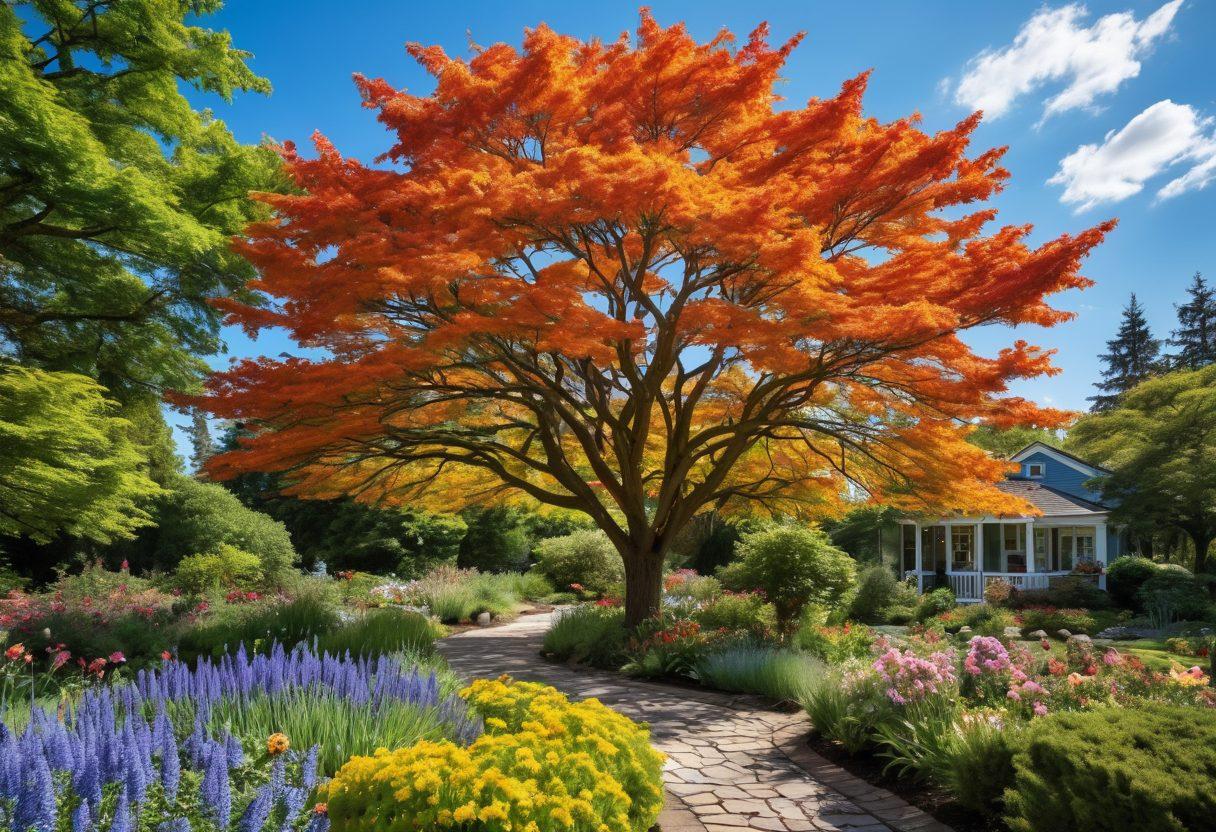Unlocking the Secrets of Tree Nomenclature: A Guide to Classification and Care
Have you ever found yourself gazing up at a towering tree and wondered how it got its name? The fabled world of tree nomenclature is not just a complex system of arboreal names; it's a fascinating journey into the heart of plant taxonomy. From the majestic evergreen trees that stand tall against the elements to the vibrant deciduous trees that paint our landscapes each autumn, understanding the intricate web of tree classification opens up a gateway to appreciating the beauty of nature. Join me as we decode tree nomenclature and unveil the secrets behind species identification and botanical classifications.
When it comes to gardening techniques, having a grasp on tree nomenclature isn’t just beneficial—it’s essential. Imagine planting a tree without knowing its full potential! Whether you’re indulging in urban horticulture or delving into environmental gardening, knowing the native tree species in your area can significantly impact the success of your landscaping with trees. Did you know that certain tree varieties are better suited for specific environments? The understanding of species of trees offers valuable knowledge that every avid gardener should possess. Remember, a little insight into tree care can lead to flourishing foliage and a thriving garden!
Let’s take a closer look at the art of plant identification. Every tree tells a story; from its leaves to its bark, and its flowers to its fruits, these characteristics are often the keys to unraveling its identity. For instance, oak trees (Quercus), with their lobed leaves and acorns, often symbolize strength in many cultures. Think about the trees you walk past daily—how well do you know their names? Could you identify a beautiful flowering dogwood from a familiar maple? This isn't just about academic knowledge; it's about cultivating a connection with the planet. As gardening enthusiasts, knowing shrub and tree names enriches our experiences in nature's playground.
Speaking of connections, uncovering botanical classifications can deepen our appreciation for the web of life. The simplicity of tree botany can be intriguing; after all, both oaks and pines belong to the overarching classification of 'trees,' yet they thrive in distinctly different environments. Exploring tree classification doesn’t have to feel daunting—think of it as a treasure map leading you to delightful discoveries! Imagine the pride you’ll feel when your friends ask about your garden, and you effortlessly rattle off the names of your cultivated species of trees, all while showcasing your expert knowledge on their characteristics and care requirements.
In conclusion, the adventure of unlocking the secrets of tree nomenclature and classification can lead to a deeper appreciation of our green friends. Whether it's learning about the role of forestry in our ecosystems or engaging with local gardening practices, we can all contribute to a greener future by nurturing our understanding of plant species and their classifications. So, next time you stroll through a park or garden, take a moment to observe the trees around you. Which ones resonate with you? What stories do they tell? By diving into the world of tree nomenclature, you not only enhance your gardening skills but also become a steward of our invaluable environment. Happy exploring!
Mastering Tree Classification: Essential Techniques for Care and Environmental Gardening
When we stroll through a park or wander down a tree-lined street, the magnificent giants towering above us often prompt a simple question: "What kind of tree is that?" Understanding tree nomenclature and mastering tree classification can transform our encounters with these natural wonders into an enlightening experience. Not only does it deepen our connection with the green world around us, but it also enhances our ability to engage in effective gardening techniques and environmental gardening. Knowing how to classify various species of trees empowers us to make informed decisions when it comes to maintaining our landscapes, which is especially important in today’s rapidly urbanizing environments.
So, what exactly is tree classification? At its core, it is a systematic way of naming and organizing the diverse arboreal names that exist in our world, allowing us to identify and classify the myriad of tree varieties based on certain traits. This structure falls under the larger umbrella of plant taxonomy, which classifies living organisms into hierarchical categories. While botanical classifications can seem daunting at first, think of it as a family tree for trees! Each species branches out from a common ancestor, and each tree fits into its own designated spot on this unforgettable family chart. From the magnificent oak trees to the striking conifers, both deciduous trees and evergreen trees hold unique ecological roles worth understanding and preserving.
Let’s delve into the heart of tree care. Knowing how to care for your tree species is akin to knowing how to nurture a friendship. You wouldn't ignore a close friend's needs, right? The same sentiment applies to our green companions. Proper tree care requires understanding what each plant species needs for growth, health, and beauty. For instance, native tree species growing in their preferred environments often require less care and are resilient to local pests. By focusing on these species, we can employ effective horticultural practices that enhance biodiversity, combat climate change, and improve urban horticulture. So, whether you’re planting a shady maple or an elegant birch, it's important to tailor your approach based on their specific requirements!
An essential aspect of mastering tree classification is being familiar with plant identification. Embrace this journey of discovery—grab a field guide or download an app that helps identify shrub and tree names, and take a walk in your local park or neighborhood. As you learn which trees grace your surroundings, ask yourself: How does this species contribute to the ecosystem? What unique traits does it possess? Each tree tells its story through its bark, leaves, and fruit. With every identification, you become more attuned to the ecological narrative unfolding around you—each tree is a chapter filled with secrets waiting to be uncovered.
Lastly, let’s turn our attention to environmental gardening and landscaping with trees. Why do we plant trees in our backyards and municipal parks? Beyond their beauty, they provide shade, reduce air pollution, and offer habitat to wildlife. When we implement thoughtful practices in our landscapes, we can create environments that are not only aesthetically pleasing but also ecologically sound. Utilize what you've learned about tree classification to select the best species for your gardening vision. Planting a mix of native and adaptable tree varieties can create resilient ecosystems. By mastering tree classification and implementing effective tree care, you become an active participant in the environmental story, paving the way for future generations to enjoy the same wonders of the arboreal realm.
In summary, tree nomenclature and classification are gateways to appreciating the incredible world of trees. As we learn to identify various species of trees, enhance our gardening techniques, and engage in mindful tree care, we are not only enriching our lives but also fostering a deeper respect for our planet. As the writer Richard Powers poignantly stated, "In the right hands, trees can tell us everything we need to know about the world around us." So let’s get our hands a little dirty and embark on this adventure of tree classification together.
A Comprehensive Guide to Tree Varieties and Horticultural Practices for Urban Landscapes
Imagine walking down a tree-lined street, the air filled with the sweet scent of nature, and the sound of leaves rustling in the breeze. Trees are not just the lungs of our urban landscapes; they are living monuments, standing tall and telling their own stories. The art of tree nomenclature dives into this fascinating world, revealing how we classify and understand the myriad species of trees that grace our cities. Have you ever wondered what goes into naming and identifying these arboreal giants, or why correct plant taxonomy matters in our daily lives?
Tree classification is more than just a scientific endeavor; it's a bridge connecting us to nature. From the majestic oaks to the vibrant maples, the diversity seen in urban horticulture is a testament to the incredible adaptability of plants. By understanding botanical classifications and the different tree varieties—deciduous trees that change with the seasons or evergreen trees that provide year-round greenery—we appreciate the role each species plays in maintaining our ecosystem. Plus, knowing the shrub and tree names helps us make informed choices when landscaping with trees to enhance our outdoor spaces.
As we embark on this journey of plant identification, it’s essential to recognize how native tree species contribute to environmental gardening. Native trees provide habitats for local wildlife, prevent soil erosion, and improve air quality. What if we could harness the power of these species of trees in our urban landscapes? By implementing sustainable gardening techniques and horticultural practices, we can create thriving green spaces that promote biodiversity and offer sanctuary to birds and butterflies alike. In today’s world, where urbanization often overpowers nature, the balance we strive for must begin with informed choices about the species we introduce into our backyards.
Think about how astonishing it is that a single tree can have multiple meanings to various cultures; it can symbolize strength, change, or even life itself. Gardening is an opportunity not only to beautify our surroundings but also to cultivate a deeper connection with the environment. Urban horticulture encourages individuals to engage in tree care, ensuring that each plant species we nurture thrives with proper techniques. What if we saw our gardening efforts as a communal struggle to foster a greener future? There’s so much potential in our gardens if we apply the knowledge of horticultural practices; even the most urban of spaces can bloom with life.
Lastly, understanding forestry and the intricate world of tree botany helps us appreciate the significant impact trees have on our urban ecosystems. As we continue exploring trees and their crucial role in our environment, let’s remember: every tree planted or maintained is a step toward a more sustainable future. So, what are you waiting for? Dive deep into the realm of tree nomenclature, embrace the beauty of tree varieties, and start your journey towards becoming a better steward of our planet with open arms—and a green thumb!


